Racing sailors face a constant stream of strategic and tactical decisions. In the heat of a situation, it’s easier to make the right decision if you’ve seen it before. To help you accumulate experience, SailZing plans to present a series of “Tactical IQ” scenarios. We begin the series with leeward mark rounding paths.
In the situation above, Blue and Yellow approach a leeward mark rounding. The gate marks are equally favored. Blue is slightly behind Yellow and decides to take the rounding path shown, while Yellow uses a “wide and tight” path. Assume Blue and Yellow’s speed and turn radius are identical. Decide your answers to the following, then read the discussion below.
- Will Blue gain on Yellow by taking the rounding path shown?
- Under what circumstances (if any) would Blue’s path be better? Yellow’s?
Blue’s Path: Strategic Rounding
In Speed and Smarts, Issue 131, Dave Dellenbaugh calls Blue’s path a strategic rounding. In A Better Way to Round the Leeward Mark (Sailing World), Andy Horton call’s Blue’s path an “apex turn,” since the low point (apex) of the turn is at the mark.
The technique in the two turns is the same: not too sharp so as to cause the boat to slow down excessively. The key difference is the location of the apex of the turn. In Blue’s path, the apex is at the mark. In Yellow’s path, the apex is downwind of the mark and to the inside.
Using the concept of ladder rungs, the diagram below shows why Blue gains on Yellow with a strategic rounding.
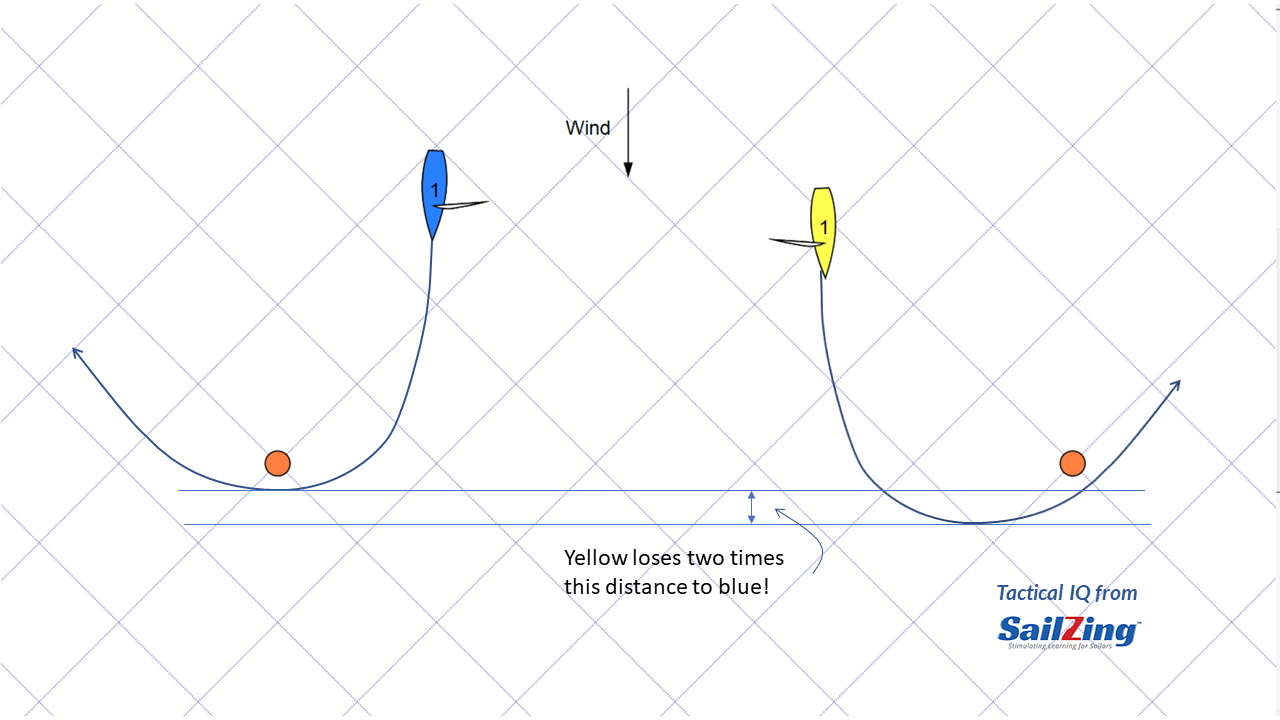
To make a smooth, fast turn while exiting tight to the mark, Yellow has to first sail downwind of the mark. Then she has to sail the same distance upwind to get back to the mark. If she sails 1/2 boat length past the mark downwind, she sails another 1/2 boat length back upwind, for a total of one full boat length of extra distance.
To see this in action watch the animation below and the freeze of it showing Blue’s gain. The animation has been carefully constructed so that Blue and Yellow make the same turns at the same speed. The only difference is that Yellow sails further downwind before starting her turn.
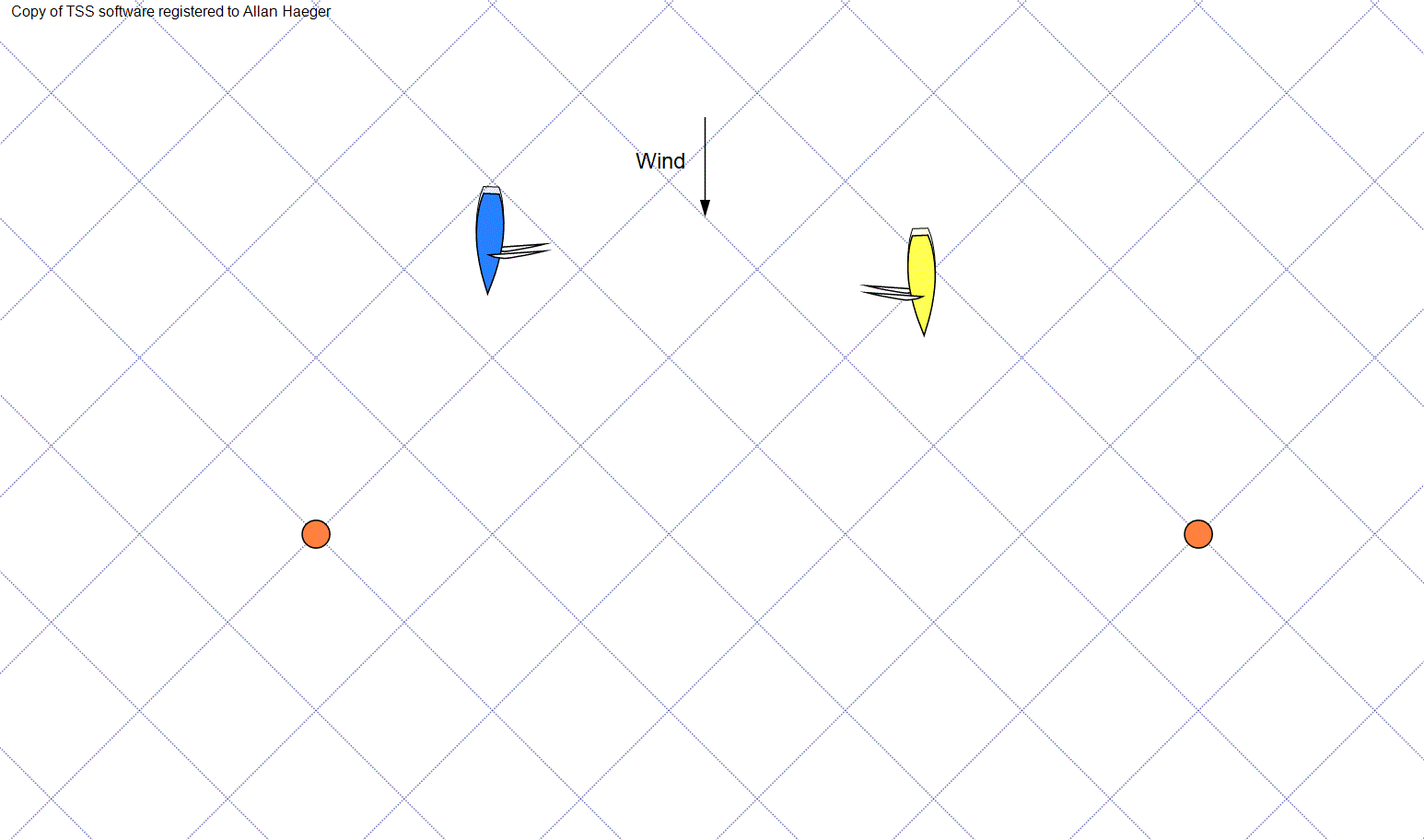
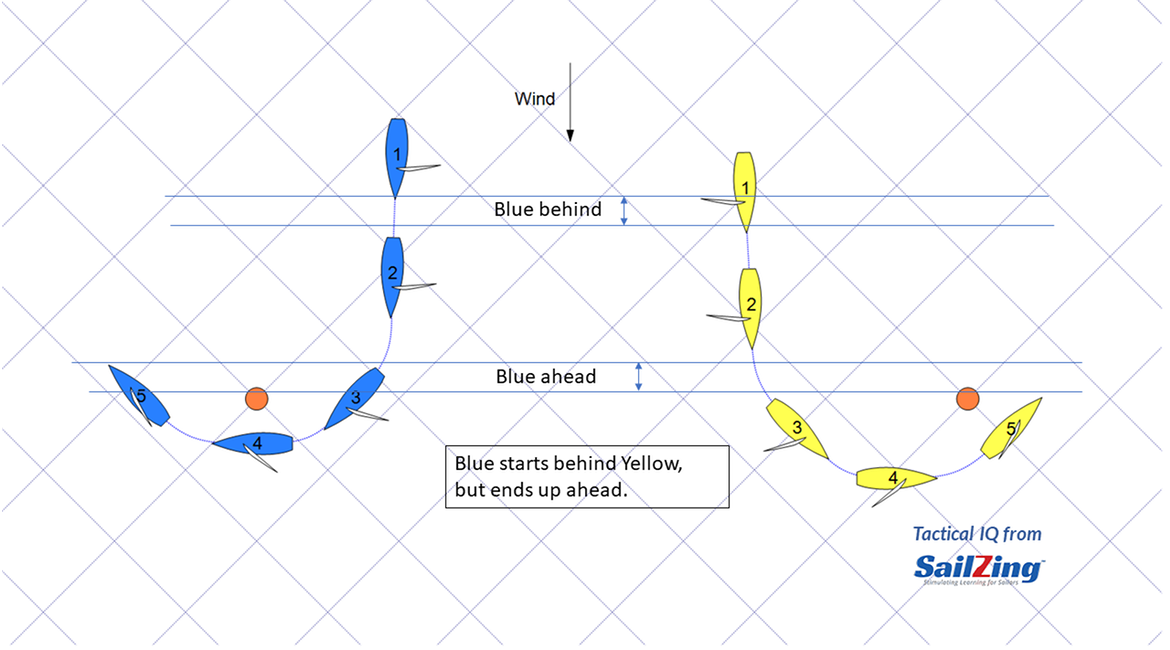
The strategic rounding is best when there are no other boats close behind or ahead on your rounding path.
Yellow’s Path: Tactical Rounding
Yellow follows the tactical rounding path that many sailors are taught: start wide and exit tight to the mark. The tactical rounding is best when two boats are rounding a mark close together. If two boats round in sequence, the one that exits tighter to the mark has more options. See the scenarios below.
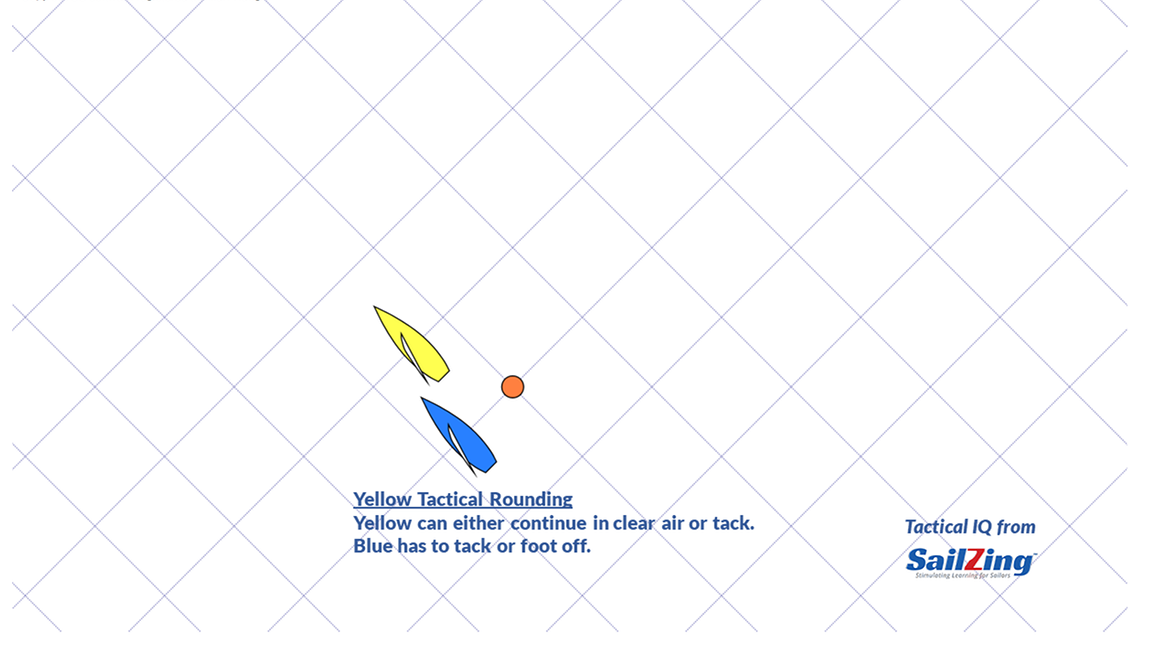
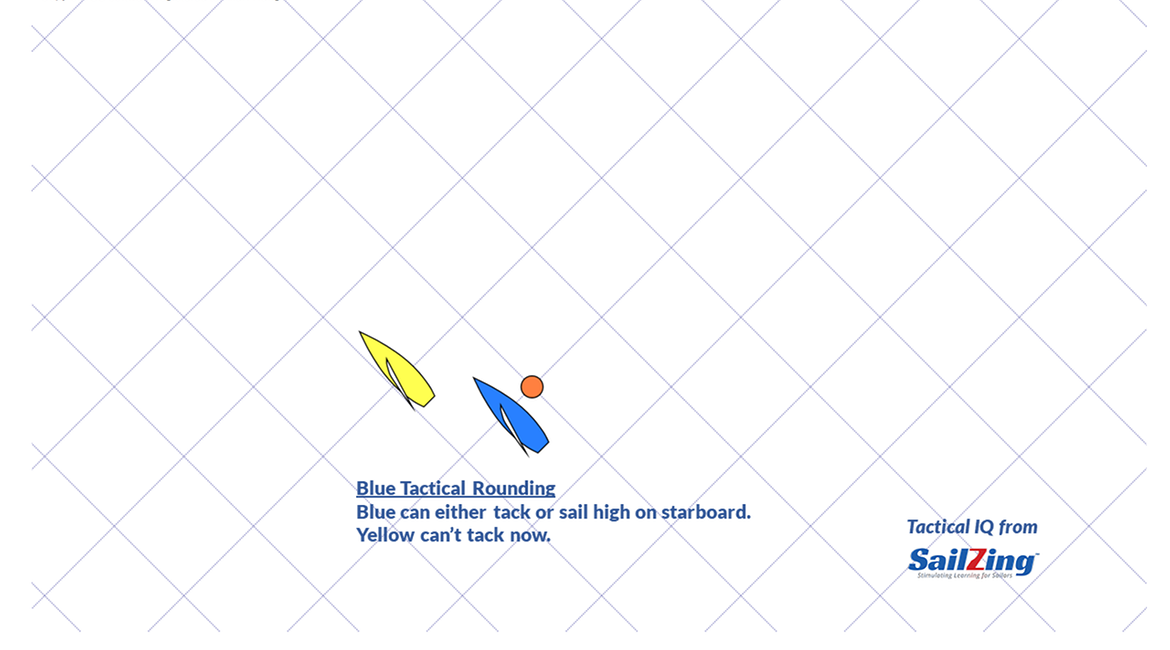
Crowded Roundings and the Racing Rules
In tight spots, many sailors default to a “narrow and tight” rounding, since they are uncertain of the rules. Of course, this means jamming the tiller over hard at the mark and luffing the sails, neither of which is fast.
In a future post on this topic, we’ll look at scenarios involving crowded roundings and the racing rules.

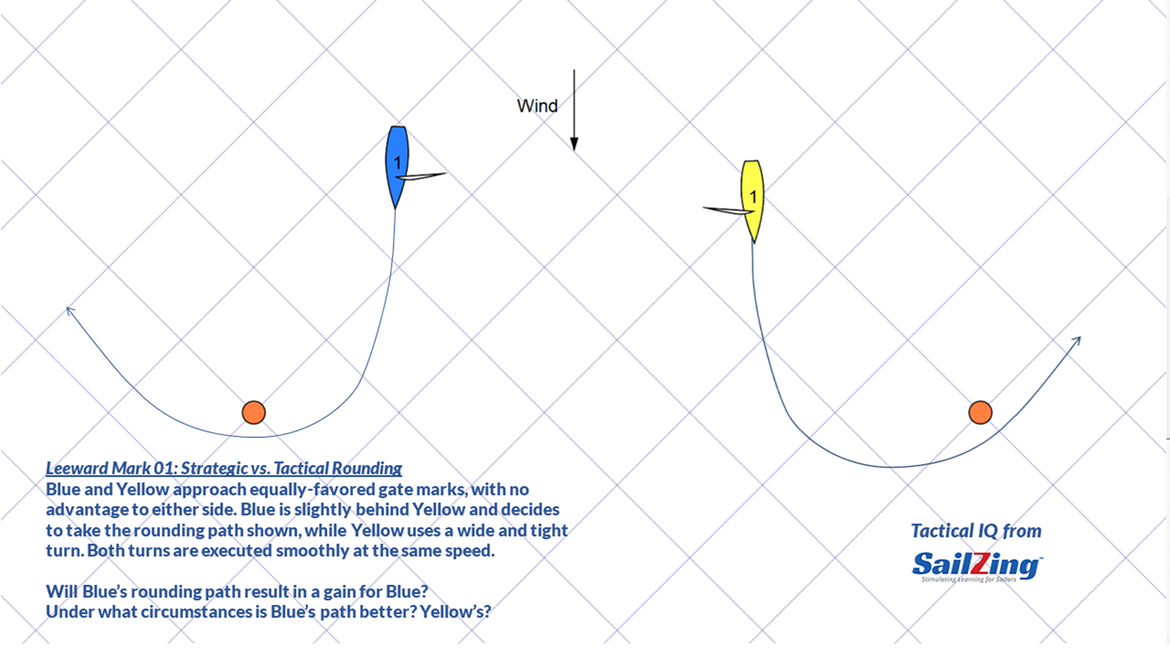




Another important point is that the strategic rounding only really works if you will have clear air leaving the mark. If you are in the middle of the fleet in a group of boats, a tactical rounding is almost always better so you can have clear air and keep your options open to tack without a boat blocking you.
Thanks for emphasizing that, JP.